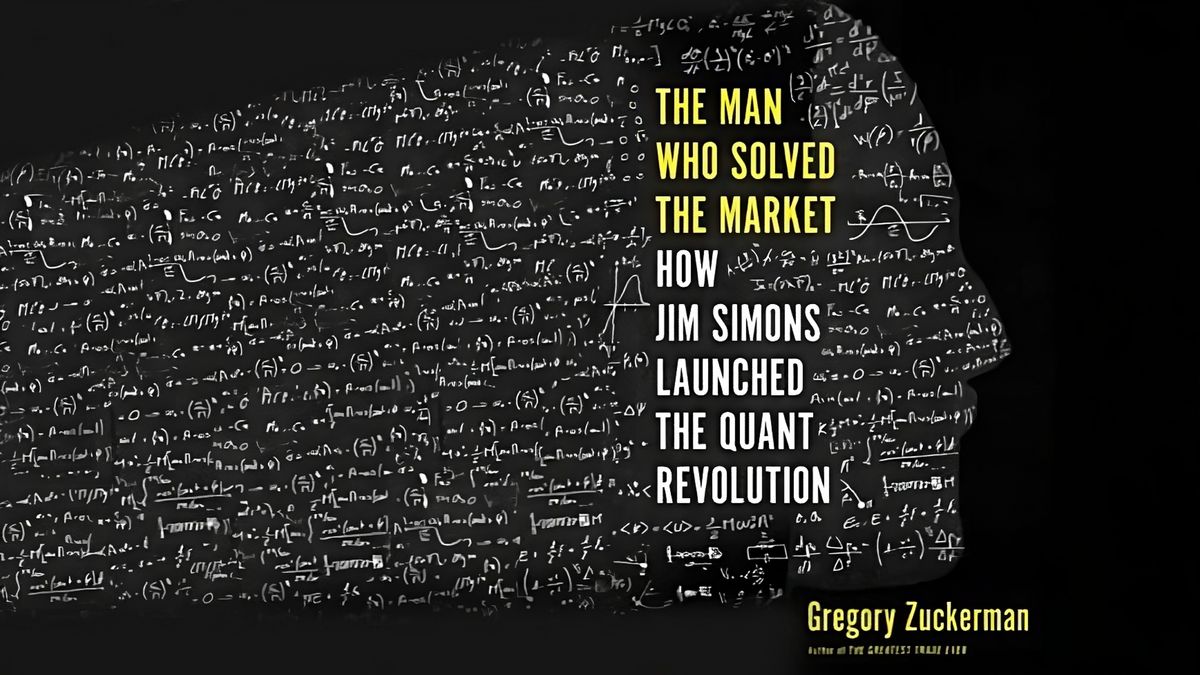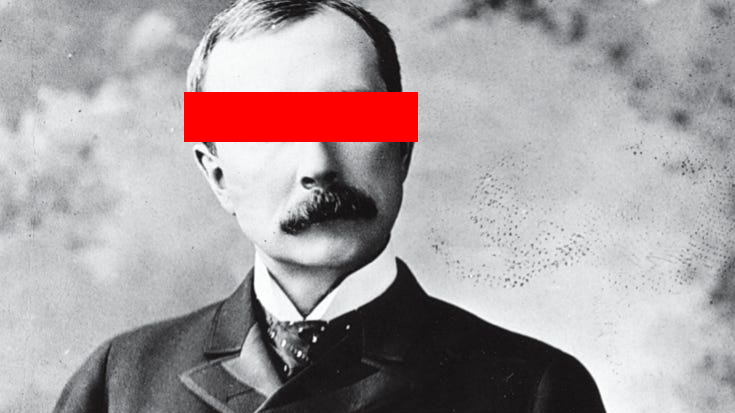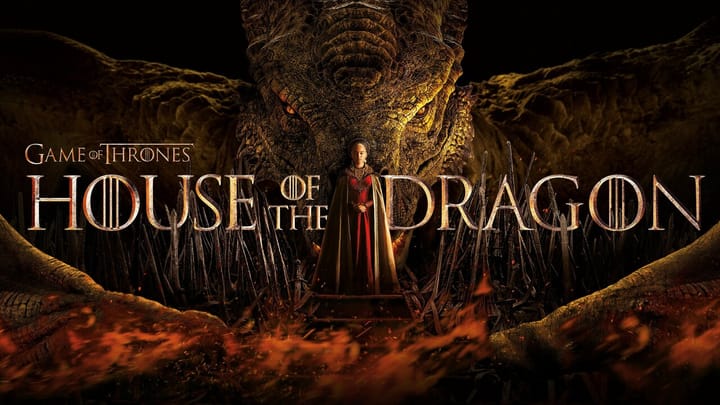The $28B Day Trader Who Beat Warren Buffett (Jim Simons)
“Jim Simons is the greatest money maker in modern financial history. No other investor—Warren Buffett, Peter Lynch, Ray Dalio, Steve Cohen, or George Soros—can touch his record. [From 1988 to 2018], Renaissance's signature Medallion fund has generated average annual returns of [69%].”

The following are my takeaways from the book The Man Who Solved the Market: How Jim Simons Launched the Quant Revolution by Gregory Zuckerman.
Who is Jim Simons?
- Jim Simons is a billionaire and the founder of Renaissance Technologies, a quantitative hedge fund.
- He studied mathematics at MIT and UC Berkeley.
- “Jim Simons is the greatest money maker in modern financial history. No other investor—Warren Buffett, Peter Lynch, Ray Dalio, Steve Cohen, or George Soros—can touch his record. [From 1988 to 2018], Renaissance's signature Medallion fund has generated average annual returns of [69%].”
- His net worth in 2023 is $28.1 billion, according to Forbes.
Key Takeaways
- Simons never took a single finance class, never cared much for business, and until he turned 40, only dabbled in trading. A decade later, he still hadn't made much headway.
- At the age of 14, Jim worked in a garden supply store. The couple who owned the store asked Jim what his long-term plans were. He told them he wants to study mathematics at MIT. They burst out laughing. Their skepticism didn’t bother Jim—he was extremely self-confident.
- Jim keeps an extremely low profile so that his competitors do not get his trading secrets. This is a completely different strategy from Ed Thorp, who gave away his knowledge for free in books or to anyone he was talking to.
- Do what you like in life, not what you think you should do.
- Jim wanted money for independence and influence.
- He understood that money = power.
- In his unit, staff members, most of whom had doctorates, were hired for their brain power, creativity, and ambition rather than any specific expertise or background.
- Simons didn’t do it all himself — he always had super smart partners and employees working with him.
- Simons and his colleagues at the Institute for Defense Analyses (IDA) write a paper called Probabilistic Models for the Prediction of Stock Market Behavior. The researchers proposed a method of trading that could return an annualized return of 50+%. (Simons was able to make an annualized return of 66% when he makes his own firm.)
- Simmons and his colleagues ignored most of the data that traders follow, like earnings, dividends, and news.
- They searched for a small number of macroscopic variables to predict short-term behavior. The paper didn’t try to identify or predict the states using economic theory or any other conventional methods. They also did not try to explain why the market entered certain states. Gamblers use a similar approach—poker players, for instance, need to identify the moods of their opponents but they do not need to know why, they simply need to know the mood to be able to profit from it.
- Simons was a great listener. He would identify good ideas that others told him.
- At 40, Simons stops his academic career to be a trader. He starts a firm that would later become Renaissance Technologies.
- Everyone is curious, but only a few people are curious and driven. If you’re curious and driven, it’s essential that you read biographies like this book so that you realize there are other people like you and that you can channel your ambition in a productive way.
- Other people are going to tell you to take the traditional route. When Simons left academia for trading, one of his mathematician peers said, “We looked down on him. Like he was corrupted and he had sold his soul to the devil.”
- Berlekamp and his colleagues hoped Medallion could resemble a gambling casino. Just as casinos handle so many daily bets that they only need to profit from a bit more than half of those wagers, the Axcom team wanted their fund to trade so frequently that it could score big profits by making money on a bare majority of its trades. With a slight statistical edge, the law of large numbers would be on their side, just as it is for casinos.
- “If you trade a lot, you only need to be right 51 percent of the time,” Berlekamp argued to a colleague. “We need a smaller edge on each trade.”
- If you make a ton of trades, it lowers the risk that each trade holds. If you trade a lot, you only need to be right 51% of the time.
- This is what Renaissance has been doing for the last 30+ years.
- In 1989, they have $27 million in the fund and it will become $100 billion within 31 years.
- The average holding time goes down to a day and a half for a week and a half.
- Simons used incentives where employees were paid bonuses but only if the company reached certain levels of profit. Bonuses were paid out over years, not in a lump sum, to keep people at the firm.
- Simons's firm focused on trading currencies, commodities, and bonds before they got into stocks.
- Simons's firm had openness among coworkers — reminds me of the idea meritocracy from Ray Dalio's Principles.
- Idea meritocracy — don’t let other people or yourself live in delusions. Always tell the truth and say what you really think.
- Idea Meritocracy = Radical Truth + Radical Transparency + Believability-Weighted Decision Making.
- Believability = expert = knowledgeable = history of success in that area.
Timeline
- 1938: Jim Simons is born
- 1958: Simons graduates from MIT
- 1964: Simons becomes a code breaker at the IDA
- 1968: Simons leads the math department at Stony Brook University
- 1974: Simons and Chern publish a groundbreaking paper
- 1978: Simons leaves academia to start Monemetrics, a currency trading firm, and a hedge fund called Limroy
- 1979: Lenny Baum and James Ax join
- 1982: The firm's name changes to Renaissance Technologies Corporation
- 1984: Baum quits
- 1985: Ax and Straus move the company to California
- 1988: Simons shuts down Limroy and launches the Medallion fund
- 1989: Ax leaves, Elwyn Berlekamp leads the Medallion fund
- 1990: Berlekamp departs, Simons assumes control of the firm and fund
- 1992: Henry Laufer becomes a full-time employee
- 1993: Peter Brown and Robert Mercer join
- 1995: Brown and Mercer achieve a key breakthrough
- 2000: The Medallion fund soars by 98.5%
- 2005: The Renaissance Institutional Equities Fund launches
- 2007: Renaissance and other quant firms suffer sudden losses
- 2010: Brown and Mercer take over the firm
- 2017: Mercer steps down as co-CEO
Notes
- Jim did not want this book to be written. He likes to stay incognito.
- Nobody would talk to Zuckerman about Simons: “Even archrivals begged out of meetings at Simons’s request, as if he was a Mafia boss they dared not offend.” “Over and over, I was reminded of the iron-clad, thirty-page nondisclosure agreements the firm forced employees to sign, preventing even retirees from divulging much.”
- Simons once quoted Benjamin, the donkey in Animal Farm, to explain his attitude: “‘God gave me a tail to keep off the flies. But I’d rather have had no tail and no flies.’ That’s kind of the way I feel about publicity.”
- Jim keeps an extremely low profile so that his competitors do not get his trading secrets. This is a completely different strategy from Ed Thorp, who gave away his knowledge for free in books or to anyone he was talking to.
- Renaissance had about 300 employees at the time of the book (2019).
- “Others at the firm are also billionaires. The average Renaissance employee has nearly $50 million just in the firm’s own hedge funds.”
- Simons never took a single finance class, never cared much for business, and until he turned 40, only dabbled in trading. A decade later, he still hadn't made much headway.
- “That is the way with wise people—they are so wise and practical that they always know to a dot just why something cannot be done; they always know the limitations. That is why I never employ an expert in full bloom. If ever I wanted to kill opposition by unfair means I would endow the opposition with experts. They would have so much good advice that I could be sure they would do little work.” ― Henry Ford, My Life and Work
- Wise people always know exactly why something won’t work, that’s why I never hire experts.
- The only real way to know if something is or isn’t possible is by conjecture (guessing) alternating with criticism. Experts only do the criticism without guessing.
- Jim was ridiculously persistent and had unbelievable self-confidence.
- At the age of 14, Jim worked in a garden supply store. The couple who owned the store asked Jim what his long-term plans were. He told them he wants to study mathematics at MIT. They burst out laughing. Their skepticism didn’t bother Jim—he was extremely self-confident.
- Jim’s dad did not live a good life. He tells Jim that he should take a career that he is excited to be in rather than the traditional route that everyone expects him to take.
- Jim had a huge desire to be wealthy even though he was not interested in business.
- When Jim is 18 or 19 he meets his first wife.
- Jim was super smart, super driven, and had a big personality.
- Jim went to MIT and UC Berkeley.
- Jim seemed to thrive on overcoming obstacles and the doubts of others.
- Jim wanted money for independence and influence.
- He understood that money = power.
- Simons was selected to join a national defense team of mathematicians from elite universities at age 28.
- In his unit, staff members, most of whom had doctorates, were hired for their brain power, creativity, and ambition rather than any specific expertise or background.
- Simons and his colleagues at the IDA write a paper called Probabilistic Models for the Prediction of Stock Market Behavior. The researchers proposed a method of trading that could return an annualized return of 50+%.
- Simmons and his colleagues ignored most of the data that traders follow, like earnings, dividends, and news.
- They searched for a small number of macroscopic variables to predict short-term behavior. The paper didn’t try to identify or predict the states using economic theory or any other conventional methods. They also did not try to explain why the market entered certain states. Gamblers use a similar approach—poker players, for instance, need to identify the moods of their opponents but they do not need to know why, they simply need to know the mood to be able to profit from it.
- People who are judged based on profit and loss (in any industry) always have better results than people who are not.
- Simons was a great listener. He would identify good ideas that others told him.
- Simons was fired from the IDA for writing an opinion piece on it. This taught him that publicity can be bad. It also made him ant more control over his income.
- At 40, Simons stops his academic career to be a trader. He starts a firm that would later become Renaissance Technologies.
- Everyone is curious, but only a few people are curious and driven. If you’re curious and driven, it’s essential that you read biographies like this book so that you realize there are other people like you and that you can channel your ambition in a productive way.
- Other people are going to tell you to take the traditional route. When Simons left academia for trading, one of his mathematician peers said, “We looked down on him. Like he was corrupted and he had sold his soul to the devil.”
- Simons’ father told him he was making a mistake switching from his academic career to trading. (Even though when Jim was younger he told him that he should take a career that he is excited to be in rather than the traditional route that everyone expects him to take.) His mathematician peers were also shocked and said he shouldn’t do it.
- Simons said he always felt like an outsider no matter what he was doing.
- When you switch careers (or when you graduate from college), you go from the top of the mountain to the bottom. You have to be prepared for that.
- Simons kept coming up with models, they would work for some time, but then they’d break. Most people would have given up but Simons kept going.
- They combined mathematical models, complicated charts, and a heavy dose of human intuition.
- They raise ~$4 million. They start buying British pounds and the currency keeps rising. They grew the fund by tens of millions of dollars. They get into other currencies and start trading bonds.
- But the success dwindles as the market turns down.
- Simons took the downturn hard and became anxious as the losses increased.
- “Sometimes I look at this and I feel like I’m just some guy who doesn’t know what he’s doing.” — Simons
- Simons’ colleague was startled. Jim’s self-confidence had always seemed infinite.
- Simons sets a new goal: To build a high-tech trading system guided by automated algorithms rather than human judgment. “I didn’t want to have to worry about the market every minute. I want models that will make money while I sleep.”
- At age 44, Jim doubts himself again: “Maybe a computerized trading system isn’t the way to go.”
- He tries again and combines more traditional financial methods with computerized trading.
- He starts investing in technology startups. He began to see himself as a venture capitalist as much as a trader.
- He goes through 12 business partners. He takes the best ideas from each of them and implements them.
- Fear is arrogance. We think that the present is better than the possible future. How do you know?
- Clean data records are the key. Their hypothesis is that past prices are indicative of future prices because human psychology doesn’t change.
- The Medallion fund had more success doing short-term trades. They were doing up to 300,000 trades a day. The longer-term trades where they held positions for a few days, were not performing as well. Simons’ new partner told him that he should focus on what’s working (short-term trades) and stop working so much on other projects outside of Renaissance Technologies.
- Focus on what’s winning.
- Berlekamp and his colleagues hoped Medallion could resemble a gambling casino. Just as casinos handle so many daily bets that they only need to profit from a bit more than half of those wagers, the Axcom team wanted their fund to trade so frequently that it could score big profits by making money on a bare majority of its trades. With a slight statistical edge, the law of large numbers would be on their side, just as it is for casinos.
- “If you trade a lot, you only need to be right 51 percent of the time,” Berlekamp argued to a colleague. “We need a smaller edge on each trade.”
- If you make a ton of trades, it lowers the risk that each trade holds. If you trade a lot, you only need to be right 51% of the time.
- This is what Renaissance has been doing for the last 30+ years.
- Prices for some investments often fell just before key economic reports and rose right after, but prices didn’t always fall before the reports came out and didn’t always rise in the moments after. For whatever reason, the pattern didn’t hold for the US Department of Labor’s employment statistics and some other data releases. But there was enough data to indicate when the phenomena were most likely to take place, so the model recommended purchases just before the economic releases and sales almost immediately after them.
- In 1989, they have $27 million in the fund and it will become $100 billion within 31 years.
- The average holding time goes down to a day and a half for a week and a half.
- Even with wild success, people will still tell you that you’re wrong. Other firms ridiculed Renaissance and Simons even though they were making a million a day.
- Simons says he has an intuition that the macroeconomic environment will have a downturn so he wants to hedge with gold. This is interesting because he had previously said that he wants to remove emotion and have only the computers trade.
- “Edward Thorp became the first modern mathematician to use quantitative strategies to invest sizable sums of money. Thorp was an academic who had worked with Claude Shannon, the father of information theory, and embraced the proportional betting system of John Kelly, the Texas scientist who had influenced Elwyn Berlekamp.”
- In 1964, Thorp turned his attention to Wall Street, the biggest casino of them all. After reading books on technical analysis—as well as Benjamin Graham and David Dodd’s landmark tome, Security Analysis, which laid the foundations for fundamental investing—Thorp was “surprised and encouraged by how little was known by so many,” he writes in his autobiography, A Man for All Markets.”
- “I don’t know why planets orbit the sun,” Simons told a colleague, suggesting one needn’t spend too much time figuring out why the market’s patterns existed. “That doesn’t mean I can’t predict them.”
- Many experts at the time thought that markets were inherently efficient. And public information is priced in.
- Simons had long been driven by two ever-present motivations: proving he could solve big problems, and making lots and lots of money. Friends never fully understood his need to accumulate more wealth, but it was ceaseless and ever-present.
- “What you’re really modeling is human behavior,” explains Penavic, the researcher. “Humans are most predictable in times of high stress—they act instinctively and panic. Our entire premise was that human actors will react the way humans did in the past . . . we learned to take advantage.”
- By the end of 1993, Medallion managed $280 million, and Simons worried profits might suffer if the fund got too big and its trades started pushing prices higher when it bought, or lower when it sold. Simons decided not to let any more clients into the fund.
- If you have a magic black box, it’s better to just grow your own money so you don’t move the market. (And make sure absolutely no information leaks.) Unless you charge investors an extremely high fee.
- “Our very good results have made us well known, and this may be our most serious challenge,” Simons wrote in a letter to clients. “Visibility invites competition, and, with all due respect to the principles of free enterprise—the less the better.”
- “Why don’t we keep it at $600 million?” Straus asked Simons. That way, Medallion could rack up $200 million or so in annual profits, more than enough to make its employees happy. “No,” Simons responded. “We can do better.”
- $200 million a year is insane profit. But Simons wanted to be a billionaire.
- There was only one way Simons could grow Medallion without crippling its returns: expand into stock investing. Because equity markets are deep and easy to trade, even huge size wouldn’t impede profits. The catch was that making money in equity markets had long confounded Simons and his team.
- The more liquidity in the market, the bigger you find can be without moving prices too much.
- An old employee who quit said this: “I thought we were one of many,” Straus says. “If I thought there was some secret sauce, I would have made sure I could stay invested in Medallion.”
- Even the people working at the firm underestimated it.
- It became clear to Mercer and others that trading stocks bore similarities to speech recognition, which was part of why Renaissance continued to raid IBM’s computational linguistics team.
- What Renaissance is doing is machine learning. Studying the past and seeing how it can apply (non-randomly) to the future.
- As more trading became electronic, with human market-makers and middlemen elbowed out of the business, Medallion spread its moves among an expanding number of electronic networks, making it easier and more efficient to buy and sell. Finally, Simons was close to his original goal of building a fully automated system with little human interface.
- Staffers became excited about developing super-short-term signals to trade in a matter of seconds, or even less, a method that would become known as high-frequency trading. Renaissance’s computers proved too slow to beat others to the market, however. Medallion made between 150,000 and 300,000 trades a day, but much of that activity entailed buying or selling in small chunks to avoid impacting the market prices, rather than profiting by stepping in front of other investors. What Simons and his team were doing wasn’t quite investing, but they also weren’t flash boys.
- Investment professionals generally judge a portfolio’s risk by its Sharpe ratio, which measures returns in relation to volatility; the higher one’s Sharpe, the better. For most of the 1990s, Medallion had a strong Sharpe ratio of about 2.0, double the level of the S&P 500. But adding foreign-market algorithms and improving Medallion’s trading techniques sent its Sharpe soaring to about 6.0 in early 2003, about twice the ratio of the largest quant firms and a figure suggesting there was nearly no risk of the fund losing money over a whole year.
- Simons’s team appeared to have discovered something of a holy grail in investing: enormous returns from a diversified portfolio generating relatively little volatility and correlation to the overall market. In the past, a few others had developed investment vehicles with similar characteristics. They usually had puny portfolios, however. No one had achieved what Simons and his team had—a portfolio as big as $5 billion delivering this kind of astonishing performance. The accomplishment opened the door to new possibilities.
- Simons used incentives where employees were paid bonuses but only if the company reached certain levels of profit. Bonuses were paid out over years, not in a lump sum, to keep people at the firm.
- Simons's firm had openness among coworkers — like Dalio's Principles.
- Simons's firm focused on trading currencies, commodities, and bonds before they got into stocks.
- Simons’s advice:
- Work with the smartest people you can—hopefully smarter than you.
- Be persistent. Don’t give up easily.
- Be guided by beauty.



Comments ()